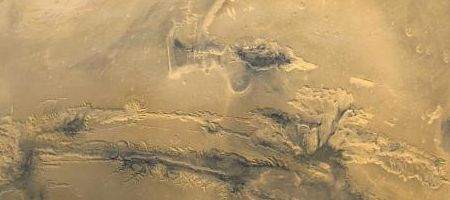University of Arkansas researchers have come up with an explanation of how water on Mars could produce the flow patterns observed by NASA’s Mars Reconnaissance Orbiter.

The team studied small flow features which appear and disappear with the seasons, particularly on slopes facing the equator. And, they say, their model shows that frozen water could melt, flow and then evaporate, creating these features.
They used different forms of salt known to form on Mars to calculate what would melt, how much would become liquid and how long the liquid would last between freezing and evaporation. They based their model on soils up to 20 centimeters deep because, they say, any deeper and seasonal temperatures wouldn’t affect freezing and melting.
Any, they say, a calcium chloride solution fitted the bill. “In one day we could form enough liquid to create these flow features on the surface,” says research assistant professor Vincent Chevrier.
The model also explains why the flow features were able to disappear though evaporation.
At low concentrations of brine, as soon as it melts, it evaporates and disappears. However, the researchers showed that if enough were melted, it wouldn’t completely evaporate, creating conditions that might explain the flow features.
The model fits with the seasonal change in flow observations, with the flows occurring on equator-facing slopes and with seasonal changes. The high surface evaporation rates used in the model also explain why, if there is water, it would disappear relatively quickly, and why imaging spectrometry on Mars hasn’t identified water signatures.
“No other current model really explains all the observations,” says Chevrier.






